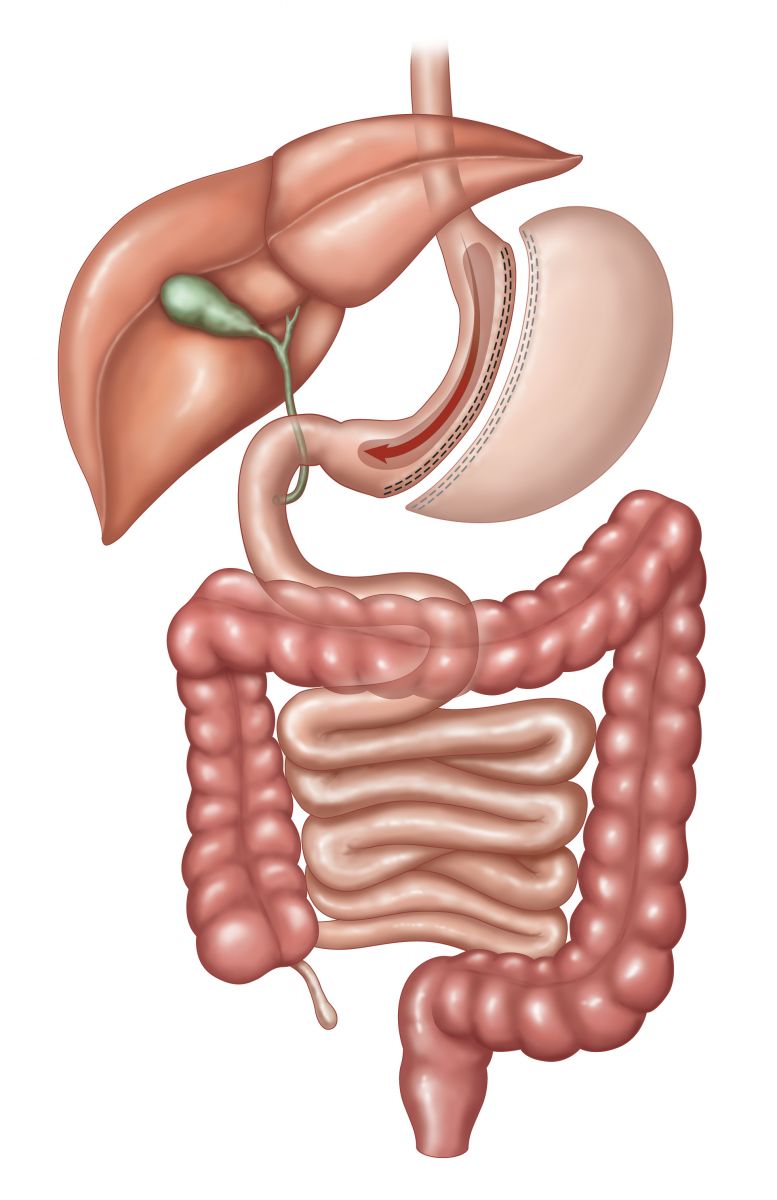Laparoscopic Vertical Sleeve Gastrectomy
 Vertical sleeve gastrectomy is a purely restrictive form of weight loss surgery in which approximately three-fourths of the stomach is removed. Unlike many other forms of bariatric surgery, the outlet valve and the nerves to the stomach remain intact and, while the stomach is drastically reduced in size, its function is preserved. Sleeve gastrectomy is not reversible.
Vertical sleeve gastrectomy is a purely restrictive form of weight loss surgery in which approximately three-fourths of the stomach is removed. Unlike many other forms of bariatric surgery, the outlet valve and the nerves to the stomach remain intact and, while the stomach is drastically reduced in size, its function is preserved. Sleeve gastrectomy is not reversible.
Removal of the majority of the stomach results in the virtual elimination of hormones produced within the stomach which stimulate hunger. One of the greatest advantages of the gastric sleeve is that it does not involve any bypassing or rerouting of the intestinal tract so patients have decreased risk for developing the potential complications of gastric bypass such as intestinal obstruction, anemia, osteoporosis, vitamin deficiency and protein deficiency.
Because the procedure requires stapling of the stomach, patients do run the risk of leakage and of other complications directly related to stapling. In addition, as with any surgery, patients run the risk of additional complications such as post-operative bleeding, small bowel obstruction, pneumonia and even death.
Some people do not like the idea of having a foreign object placed, so they know they do not want a band; some do not like the idea of having the intestines bypassed so they know they do not want a bypass. Vertical sleeve gastrectomy provides restriction without the need or placement of a foreign object and without bypassing the intestine. Vertical sleeve gastrectomy may be a good option for individuals who are either extremely overweight or whose medical condition would rule out other forms of surgery. For those who are extremely overweight, vertical sleeve gastrectomy would normally be performed as the first of a two-part staged procedure with further bariatric surgery planned once the patient’s weight has decreased enough to lower their surgical risk.
Click below to view Vertical Sleeve Gastrectomy Procedure.
Advantages
- Other than restriction, the stomach continues to function normally
- The major part of the stomach which produces hormones responsible for stimulating hunger is removed
- Dumping is usually (but not always) avoided as the pylorus valve is left intact
- Provides a solution for patients with conditions which place them at an unacceptably high risk from other forms of bariatric surgery
Risks
- High BMI patients may require follow-up weight loss surgery to achieve their goal
- Patients can slow weight loss if they do not make the appropriate dietary changes after surgery
- Complications may occur as the result of stomach stapling
- The procedure is not reversible as part of the stomach is permanently removed
